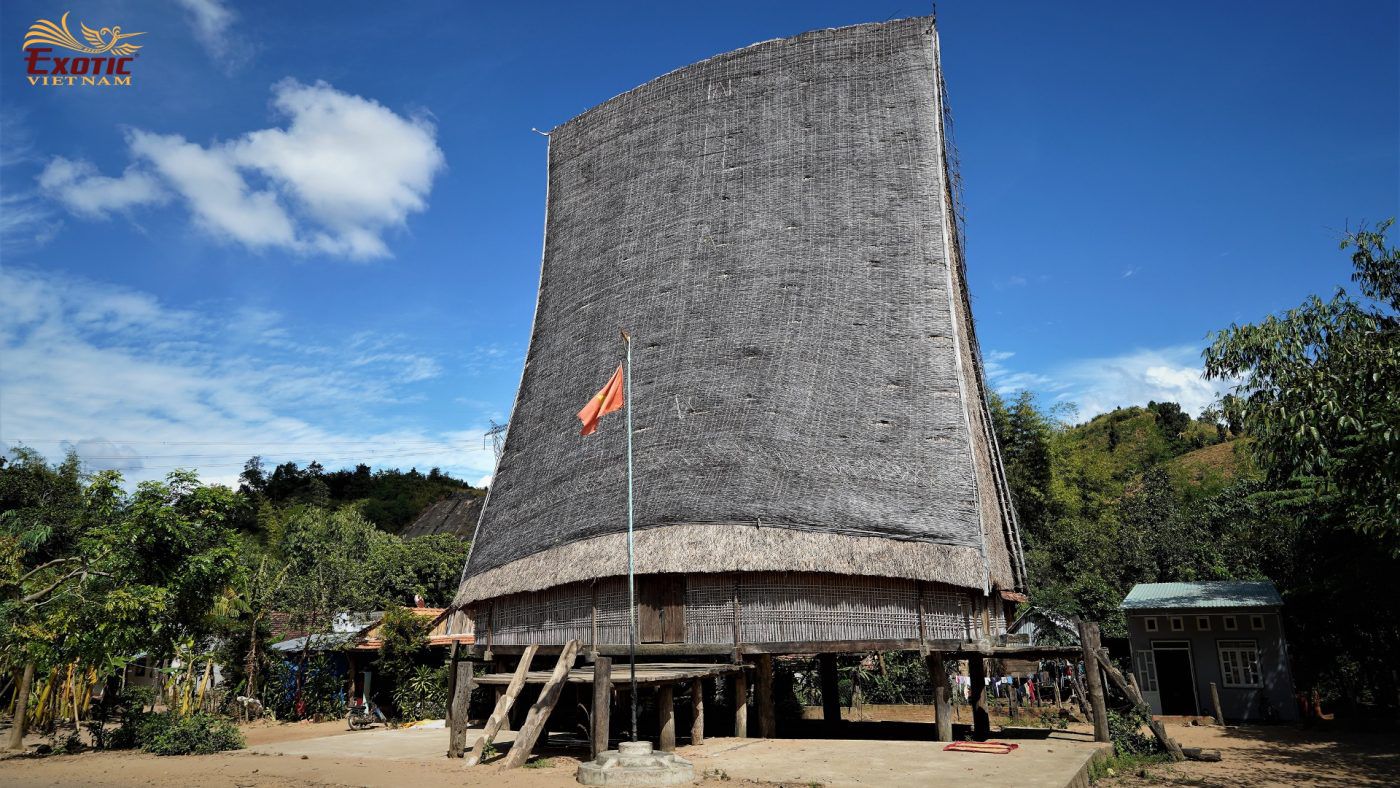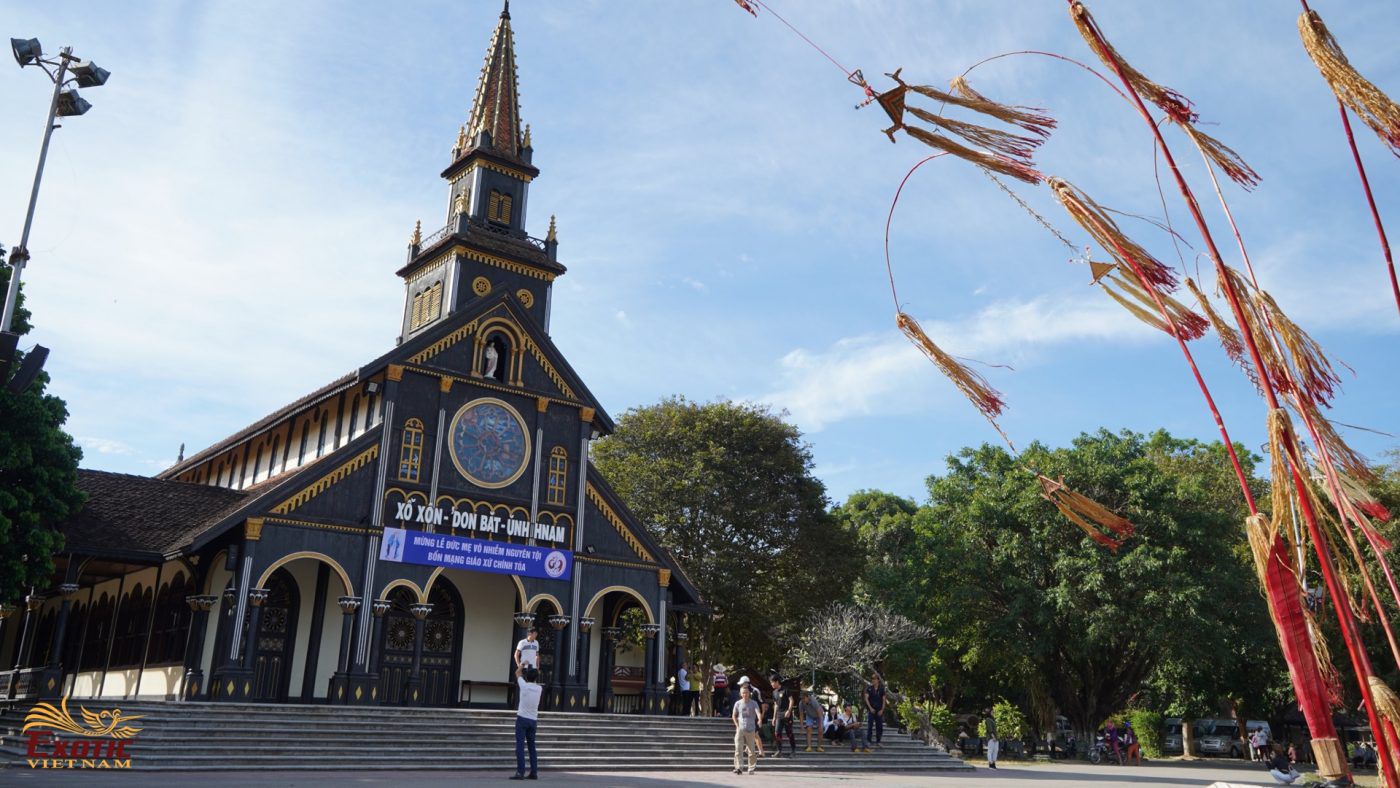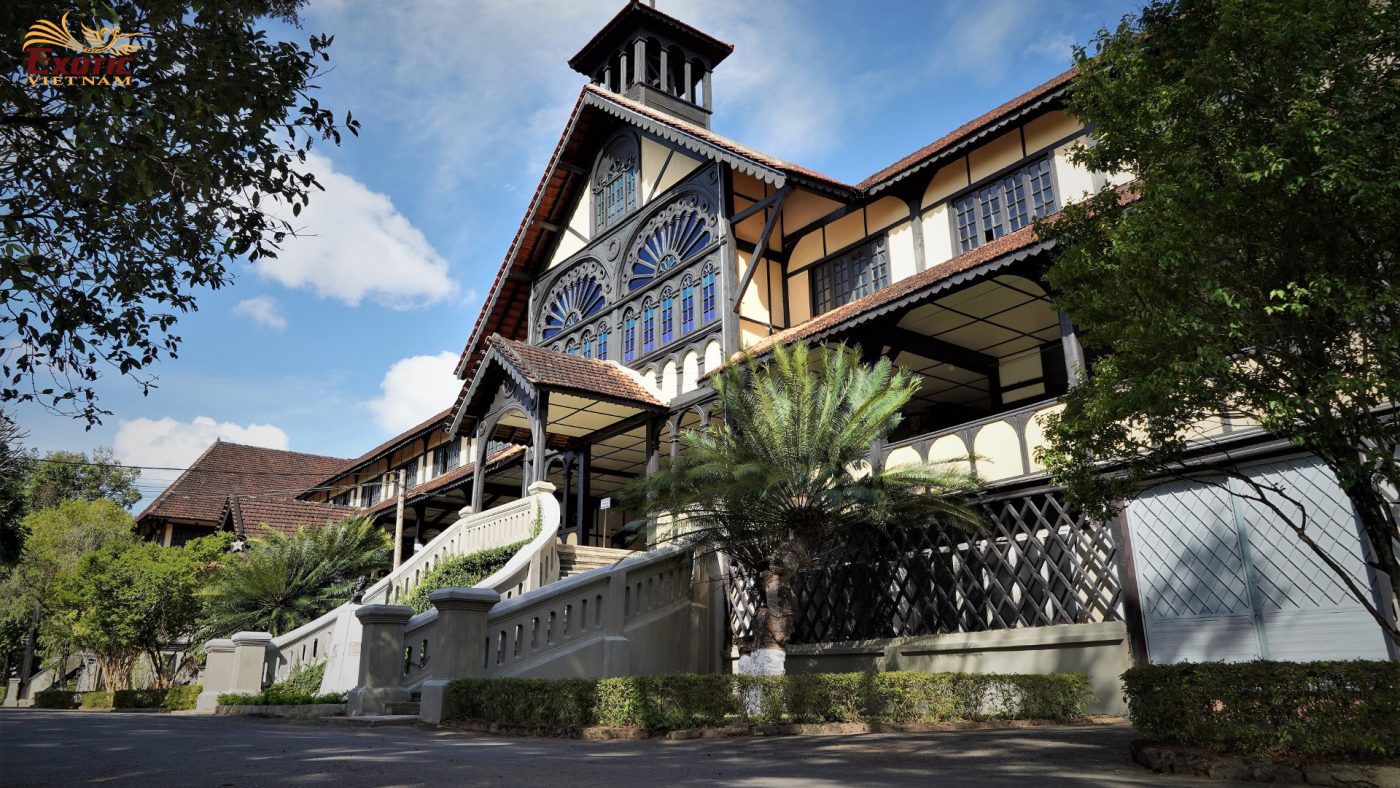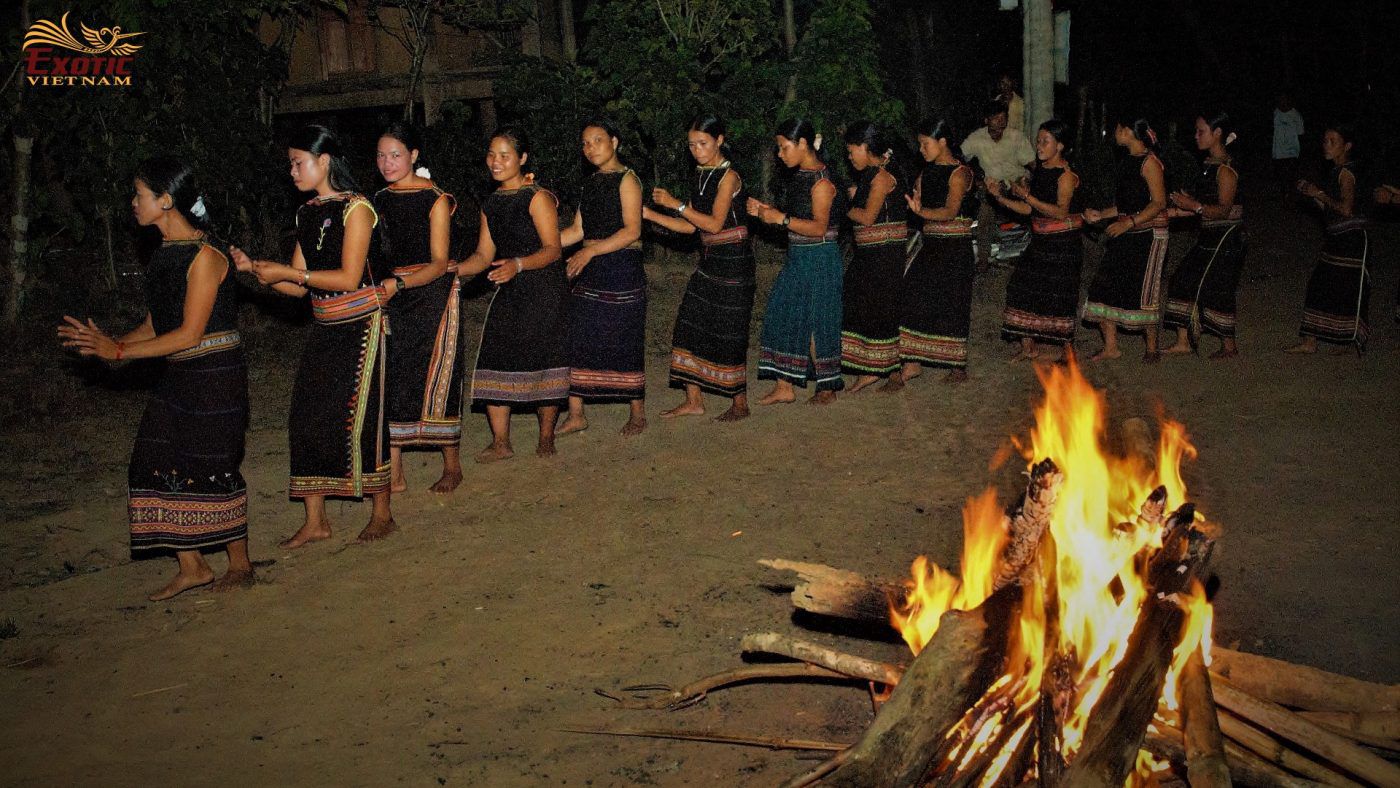TEAM BUILDING IN KON TUM

Location: 585km from HCMC (12 hours by car via NR14 or 1 hour by plane), 47km north of Pleiku (1 hour by car), 235km north of Buon Ma Thuot (5 hours by car) and 200km west of Quang Ngai (5 hours by car).
Introduction: Surrounded by high mountains, Kon Tum City is a wide valley at an altitude of 500m above sea level, built up by fertile alluvium of DakBla River. For a long time, this valley has been inhabited by indigenous Bahnar people with rich rice fields and villages. The locals call this place Kon Tum, which means “Lake Village” in Bahnar language, because of many natural ponds along the river. In the years 1841-1850, the French on their way to the highlands to missionary set up the first Christian base here. In 1893, the French colonial government established the Kon Tum administrative agency, managed by priests, and since then the name of Kon Tum has been officially used as a provincial administrative unit.
Not far from Kon Tum City in the north used to be the battlefields during the Viet Nam War where the mountain and the jungle along the Ho Chi Minh trail were a shield against American air attack. Many strategic peaks such as Chu Tan Kra (995m), Charlie (1015m), Delta (1049m), Chu Mom Ray (1780m), etc. were the intense and bloody battles that heavily damaged to both sides.
So far, Kon Tum has fortunately not been “occupied” yet by tourism industry’s giants with many projects causing negative impacts on the environment. Nature and indigenous culture here are still intact. Prominent cultural heritages of Bahnar, J’rai and Sedang groups such as communal houses and tomb statues are always handed down from generation to generation. The presence of the French missionary at the early time also left many valuable Christian architectural works to become must-see attractions in Kon Tum. The suburbs of the city are really the paradise to develop the unlimited plantations of rubber, coffee, tea, pepper as well as to preserve the primeval tropical forests.
A trip to visit ethnic villages around the city follows the scenario of The Amazing Race, or participating in trekking through the forest, dug-out canoeing along the DakBla river to the villages in the journey of Treasure Hunt, enjoying gong performances and tasting local dishes are a long-lasting experience. This is also an ideal place for a combination of team building activities and corporate CSR efforts such as raising employees’ awareness about the community and the environment. This is an opportunity to give back to disadvantaged people at ethnic villages. Exotic Vietnam, a dedicated companion, always works with businesses to organize effective events.
Highlights: The Wooden Cathedral, Kon Tum Monastery, Kon Ktu hill tribe village, Plei Phun hill tribe village, etc.
Facilities & services: trekking through jungle, white water rafting on untamed river, hill tribe village stay, tourist class hotels and restaurants.

Wooden cathedral
The cathedral was built from 1913 to 1918 by a French priest named Guise Decrouille. All the materials were high-quality wood as rosewood and ca chit, a valuable wood once growing in abundance across the Central Highlands but rather rare these days.
The church’s architecture combines Roman and Gothic arches and features of Viet Nam’s Central Highlands styles. The whole structure stands one meter above the ground on wooden pillars like many hill tribes’ houses and communal houses. The church’s inside was also decorated in the Central Highlands style to make it suitable to the traditional culture of the people in the region. Some typical features of Bahnar tribe can be seen in the front yard of the cathedral such as communal house, ritual pole, grave statues, etc. The statues of Jesus and the Virgin Mary here are also carved directly from wood as well.
There is also an orphanage, named To Am Vinh Son 1, which is just a few steps behind. Hundreds of ethnic orphans from infants to 12-year-olds have been raised by nuns here. A cultural show performed by hill-tribe children does not provide plenty of entertainment but is a way you can share love and attention.
Thanks to its incredible designs, the Cathedral of Kon Tum – or the Wooden Cathedral is a massively popular check-in spot no visitor should miss out on. Come here to gawk at the architecture and bring home awesome shots.

Kontum Monastery
Built from 1935 to 1938 in a 5-ha area, the Kontum Monastery was made of wood. The architecture was a mixture of Bahnar stilt-houses and European-style cathedral. The building is 100m long and has 3 floors. It is a school of bishops and priests. Inside the monastery, there is an exhibition place of Bahnar culture, one of indigenous ethnic groups making up the majority in Kon Tum. Visitors can find several wooden statues (20cm high) demonstrating daily activities of Bahnar people such as farming, drinking wine, gong show or “grave abandoning” ceremony.

Kon Ktu hill tribe village
Most Bahnar villages are located near rivers surrounded by forests and mountains. However, only a few of these villages still keep traditional characters such as Kon Ktu village.
The village is lying on the Dakbla riverside, 8km from Kon Tum. There are about 300 villagers of 60 families at the village. They earn their living mainly by farming such as rice, corn, sweet potato, cassava, etc., some fishing in the river. Right in the middle of the village, a soaring communal house that is considered the most beautiful in the Central Highlands is still used for meetings, parties, or as a place to welcome tourists, visitors can stay overnight in the communal house and enjoy Bahnar-style gong dances and performances.

Plei Phun village
Plei Phun village or Ia M’nong village is a one of J’rai villages located halfway between Kon Tum and Plei Ku, on the way to Yali hydroelectric plant. One of the interesting things to see here is how villagers take water from the hillside with bamboo pipes. Then visitors can come to see the communal house in the center of the village a where villagers gather in special occasions. At the end of the village there is a cemetery with wooden grave statues which are made to serve the dead.
What’s the grave statue? The dead’s relatives chop wood from the forest to make the statues. Those statues will be used on the day of “grave abandoning” ceremony. After the ceremony, all the ties among the dead and their relatives will be cut off and no more visits to the dead ’s tomb. The people here believe this would bring a new life to the deceased. The grave statues are carved according to 3 subjects: metempsychosis (such as statues of a pregnant woman, an embryo, a couple copulating, etc.), Dead’s slavers (such as statues of dancers, drummers, etc.) and other symbols (such as statues of soldiers, tanks, animals, etc.).
The village attracts many visitors who come to see the activities of not only the living, but also the world of the dead, that’s the grave statue.
